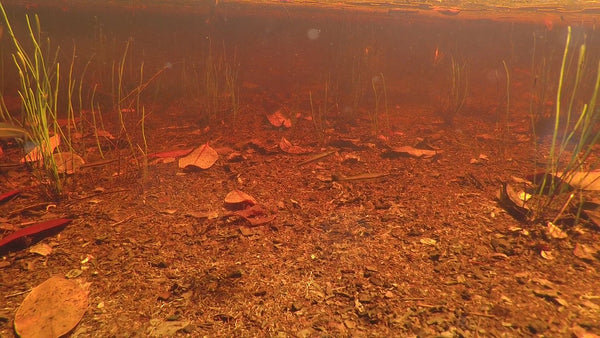Tannin Aquatics
CCA Members
I'm not a scientist. I don't "play one on TV"- yet I have a curiosity about some obscure stuff that makes me wish that I majored in chemistry instead of marketing sometimes!
A friend, Vince Dollar, passed along an interesting tidbit of knowledge a while back...one of those things worth considering. He noted that a study on dissolved organics in bodies of water worldwide indicated that even seemingly crystal clear waters of Florida, Central America, and even ice-covered lakes in Antartica that have not been exposed to the atmosphere in millions of years, are laden with dissolved organics, with 40% to 80% of those organics being humic substances.

As a refresher, the International Humic Substances Society (I'm not kidding, this organization exists...Crazy-ass partiers, I'll bet!) in part, defines them as follows:
"Humic substances (HS) are major components of the natural organic matter (NOM) in soil and water as well as in geological organic deposits such as lake sediments, peats, brown coals and shales. They make up much of the characteristic brown color of decaying plant debris and contribute to the brown or black color in surface soils. They are major components of NOM in surface waters and at higher concentrations can impart a dark color, especially in brown fresh water ponds, lakes, and streams. In leaf litter or composts, the color may be yellowish-brown to black, depending on the degree of decay and concentration."
These substances, which have been proven by science to be so important to the overall health and well-being of fishes worldwide, are, in the words of our friend Vince, who has studied them extensively, "A foundational necessity. In some environments, such as Blackwater environments, they make life possible. Fish could not exist in these conditions without them. In other environments, such as Central American aquifer -fed streams and lakes, they make life better."

He further suggests that in our quest to make aquarium water look like our drinking water, we purposely remove these valuable compounds. It's interesting, isn't it? I mean, you wouldn't want to drink a cup of blackwater from the Rio Negro, so the assumption that fish would want to live in ultra-pure drinking water simply overlooks their physiological needs. They've evolved to inhabit a dramatically different environment than we typically provide in our aquariums- for better or for worse.
Interesting... (click to read more)
A friend, Vince Dollar, passed along an interesting tidbit of knowledge a while back...one of those things worth considering. He noted that a study on dissolved organics in bodies of water worldwide indicated that even seemingly crystal clear waters of Florida, Central America, and even ice-covered lakes in Antartica that have not been exposed to the atmosphere in millions of years, are laden with dissolved organics, with 40% to 80% of those organics being humic substances.

As a refresher, the International Humic Substances Society (I'm not kidding, this organization exists...Crazy-ass partiers, I'll bet!) in part, defines them as follows:
"Humic substances (HS) are major components of the natural organic matter (NOM) in soil and water as well as in geological organic deposits such as lake sediments, peats, brown coals and shales. They make up much of the characteristic brown color of decaying plant debris and contribute to the brown or black color in surface soils. They are major components of NOM in surface waters and at higher concentrations can impart a dark color, especially in brown fresh water ponds, lakes, and streams. In leaf litter or composts, the color may be yellowish-brown to black, depending on the degree of decay and concentration."
These substances, which have been proven by science to be so important to the overall health and well-being of fishes worldwide, are, in the words of our friend Vince, who has studied them extensively, "A foundational necessity. In some environments, such as Blackwater environments, they make life possible. Fish could not exist in these conditions without them. In other environments, such as Central American aquifer -fed streams and lakes, they make life better."

He further suggests that in our quest to make aquarium water look like our drinking water, we purposely remove these valuable compounds. It's interesting, isn't it? I mean, you wouldn't want to drink a cup of blackwater from the Rio Negro, so the assumption that fish would want to live in ultra-pure drinking water simply overlooks their physiological needs. They've evolved to inhabit a dramatically different environment than we typically provide in our aquariums- for better or for worse.
Interesting... (click to read more)


